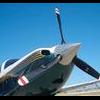RPM gauge occasionally jumpy
-
Members Online
- rklems
- TCC
- ta2too
- IvanP
- PT20J
- Aerodon
- TangoTango
- Yetti
- src223
- oisiaa
- Bob E
- mooniac58
- 201Mooniac
- Bunti
- TheAv8r
- hammdo
- Scottknoll
- jcolgan
- Scott Ashton
- Slick Nick
- 76Srat
- redbaron1982
- Yan X
- Vance Harral
- DanM20C
- Sue Bon
- Rmfriday
- Schllc
- eman1200
- mike_elliott
- donkaye, MCFI
- Grant_Waite
- itsmekw
- M20F
- pfactor
- mgreer
- Jim F
- Chuck Balogna
- Guy123
- atpdave
- Nick Lombard
- Mister_Bevilaqua


Recommended Posts